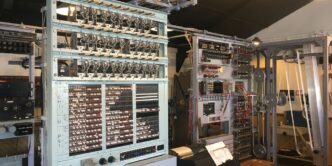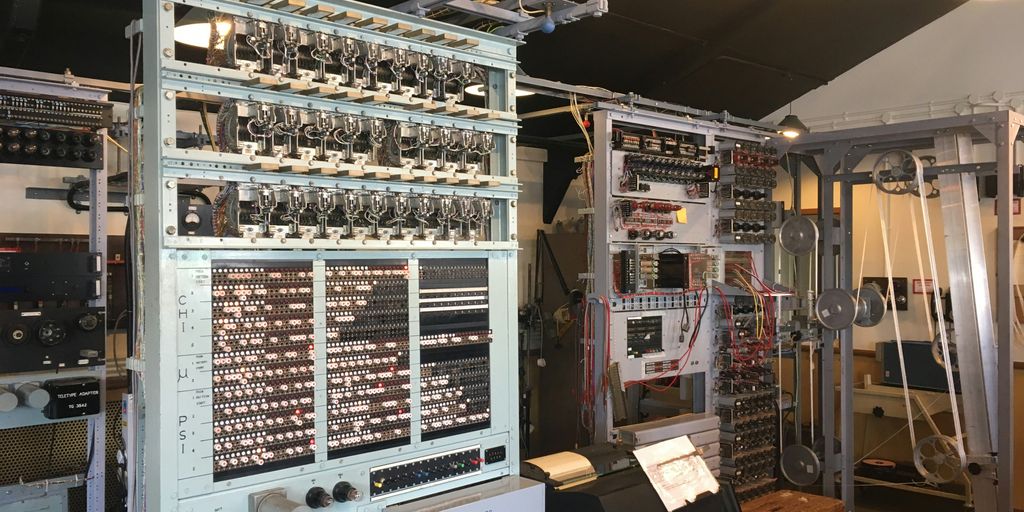Microsoft has made a big splash in the quantum computing world with its new Majorana 1 chip. This thing uses something called ‘topological qubits’ and a ‘topoconductor,’ which sounds super sci-fi, right? Basically, it’s a huge step forward for quantum tech. This article will tell you all about what Microsoft did, how it fits into the bigger picture of quantum stuff, and what it could mean for industries like making new materials or even helping with climate change. It’s a pretty big deal.
Key Takeaways
- Microsoft’s Majorana 1 chip uses topological qubits, which are way more stable than regular ones.
- This new tech could help build quantum computers with millions of qubits, a big jump from what we have now.
- The chip uses ‘Majorana particles’ to make qubits that don’t mess up as easily, which is a huge problem in quantum computing.
- This breakthrough means quantum computers might soon fit into regular data centers, not just giant labs.
- The tech could change everything from making new medicines to improving AI, saving industries tons of money.
Revolutionizing Quantum Architectures for Industrial Impact

Microsoft is really changing things up with their approach to quantum computing, especially with the Majorana 1 chip. It’s not just about making a quantum computer; it’s about making one that can actually be used in industries. They’re thinking about the whole system, not just the qubits. This means making sure the quantum computer is stable, can be scaled up, and can work with the tech we already have.
Unlocking Industrial-Scale Quantum Computing
Microsoft isn’t just aiming for theoretical advancements; they want practical solutions. Their focus is on building quantum computers that can tackle real-world problems. This means creating systems that can handle complex calculations and integrate with existing infrastructure. It’s about making quantum computing accessible and useful for businesses and researchers.
Paving the Way to a Million Qubits
Scaling is a huge challenge in quantum computing. Getting to a million qubits isn’t just a number; it’s about having enough power to solve really tough problems. Microsoft is working on architectures that can actually reach that scale. This involves:
- Developing more stable qubits.
- Improving error correction methods.
- Simplifying the control systems.
The Engineering Behind Majorana 1
The Majorana 1 chip is a big deal because it uses topological qubits. These qubits are designed to be more stable and less prone to errors than traditional qubits. The chip uses a special material stack of indium arsenide and aluminum to create Majorana particles. This design is meant to make the qubits more robust and reliable, which is essential for building a useful quantum computer.
The Core of Microsoft’s Breakthrough: Topological Qubits
Microsoft’s quantum leap hinges on a pretty wild idea: topological qubits. Forget the usual fragile qubits; these guys are built differently, using something called topoconductors. It’s a game changer, honestly.
Harnessing Elusive Majorana Particles
Okay, so here’s where it gets a little sci-fi. Microsoft is chasing after Majorana particles, which are these weird particles that are their own antiparticles. Think of it like a mirror image that’s also the original. These particles, if they exist and can be controlled, could form the basis of super-stable qubits. It’s like finding the holy grail of quantum computing stability. The visual illustrates 1D Majorana Fermions on Topological Insulators of Microsoft’s Majorana 1 chip and its breakthrough in quantum computing using topological qubits.
Error Resistance Through Topoconductors
Topoconductors are the key to making this work. Normal qubits are super sensitive; a tiny vibration or temperature change can mess them up. But topoconductors create a special state of matter that protects the Majorana particles, making the qubits way more resistant to errors. It’s like building a fortress around your quantum information. This intrinsic error resistance is what makes the leap from a few qubits to a million qubits both feasible and commercially viable.
Majorana Zero Modes Design
So, how does this all translate into a working qubit? It’s all about something called Majorana zero modes. These modes exist at the edges of the topoconductor and can be used to encode quantum information. The cool thing is that because they’re topologically protected, the information is much less likely to be corrupted. Microsoft’s design uses S-TI-S Josephson junction model shown in the image is directly related to how Microsoft is designing qubit interactions within their Majorana 1 processor. It’s a complex design, but the potential payoff is huge: stable, scalable quantum computers that can actually solve real-world problems. Microsoft’s groundbreaking achievement with the Majorana 1 chip is sending shockwaves through the quantum computing world. With its pioneering Topological Core architecture and the world’s first topoconductor, this innovation sets a transformative milestone in quantum technology. By harnessing the elusive Majorana 1 chip is sending shockwaves through the quantum computing world.
Overcoming Quantum Challenges: Scaling and Stability
Addressing Qubit Fragility
Quantum computing is exciting, but qubits are super sensitive. They’re easily messed up by tiny changes in their environment, which leads to errors. It’s like trying to balance a house of cards on a trampoline – any little vibration can make the whole thing collapse. This fragility has been a major roadblock in making quantum computers that can actually do useful stuff. The challenge is to find ways to protect qubits from these disturbances so they can reliably perform calculations.
Fault-Tolerant Topological Qubits
Microsoft’s approach with topological qubits is a game-changer because it tackles this fragility head-on. Instead of relying on delicate quantum states, topological qubits store information in the shape of the qubit itself. Think of it like braiding hair – the pattern is more important than any single strand. This makes them way more resistant to errors. It’s not perfect, but it’s a huge step forward. This topological quantum computing method offers a promising approach for large-scale quantum computing.
Simplifying Operational Complexity
Building a quantum computer isn’t just about the qubits themselves; it’s also about controlling them. Traditional quantum computers need a ton of wires and complicated setups to manage each qubit. Microsoft’s new design simplifies this a lot. By using a different control mechanism, they’ve made the whole system less complex and smaller. This means quantum computers can fit into data centers more easily, which is a big deal for making them accessible to more people.
Majorana 1: A Paradigm Shift in Quantum Computing
Microsoft’s unveiling of the Majorana 1 chip isn’t just another step; it’s a real game changer in quantum computing. It’s like they’re not just improving the old tech, but rewriting the rules. They’re using topological qubits, which are way more stable, and designing things so they can actually get bigger without falling apart. It’s a big deal.
Transformative Milestone in Quantum Technology
This chip is a huge deal because it uses topological qubits. These qubits are inherently more stable than regular qubits, which means fewer errors. Think of it like this: regular qubits are like balancing a pencil on its tip, while topological qubits are like a sturdy pyramid. The difference in stability is massive. This is a quantum computing breakthrough that could change everything.
Accelerating Industrial Problem Solving
With Majorana 1, we’re talking about solving problems that were previously impossible. Imagine training AI models on data sets so complex they’d make today’s supercomputers sweat. This tech could speed up drug discovery, create new materials, and optimize logistics in ways we can barely imagine right now. It’s not just about faster calculations; it’s about tackling entirely new classes of problems.
Beyond Classical Supercomputers
Classical supercomputers are powerful, sure, but they hit a wall when dealing with certain types of complexity. Quantum computers, especially those built on topological qubits, can break through those barriers. It’s like comparing a bicycle to a rocket ship. The potential is there to go way beyond what classical machines can do. The goal is to build a million-qubit computer that fits in a data center.
The Science Behind Topological State Computing
Chiral Majorana Mode at Interfaces
Okay, so this is where things get a little wild. We’re talking about chiral Majorana modes, which pop up at the interface between a magnet, a superconductor, and a topological insulator. Think of it like a special meeting point where different materials come together and create something unique. The cool part is that these modes behave in a way that makes them their own antiparticles. It’s like a mirror image, but instead of light, it’s matter. This is crucial for how Microsoft is building its topological qubits.
Superconductor-Topological Insulator-Superconductor Junctions
Now, let’s zoom in on something called a Superconductor-Topological Insulator-Superconductor (S-TI-S) junction. Basically, you’ve got a topological insulator sandwiched between two superconductors. When the phase difference between the superconductors hits a certain point (φ = π, if you’re into the math), something amazing happens: gapless, non-chiral Majorana fermions show up. These aren’t just any particles; they’re protected, meaning they’re less likely to be messed with by outside interference. Microsoft’s Majorana 1 chip design relies heavily on the stability of these Majorana zero modes, which emerge in these S-TI-S junctions. It’s all about creating the right conditions for these special particles to exist and do their thing.
Majorana Fermions as Their Own Antiparticles
This is a mind-bender, so bear with me. Imagine a particle that is its own opposite. That’s a Majorana fermion. The equation γₖ = γ₋ₖ† represents this concept. It’s not just a theoretical curiosity; it’s the foundation for building more stable qubits. Because these particles are their own antiparticles, they’re incredibly stable and less prone to errors. This inherent stability is what makes topological qubits so promising. It’s a completely different approach than traditional qubits, which are super fragile and need constant error correction. With Majorana fermions, the information is encoded in a way that’s naturally more resistant to noise and interference. It’s like building a fortress around your data, using the fundamental laws of physics as your building blocks.
Commercial Applications and Broader Implications
Driving Commercial Applications
Okay, so Microsoft’s breakthrough with topological qubits isn’t just some cool science experiment. It’s about making quantum computing useful for businesses. The goal is to move beyond theoretical possibilities and start solving real-world problems. Think about it: better materials, faster drug discovery, more efficient logistics – all powered by quantum computers. It’s like upgrading from a bicycle to a rocket ship, but for computation. The potential is huge, and companies are already exploring how to use this tech to get ahead. It’s not just about bragging rights; it’s about making money and improving lives.
Disrupting Key Industry Sectors
Quantum computing has the potential to shake up a bunch of industries. Let’s look at a few:
- Materials Science: Imagine designing new materials with specific properties at the atomic level. Quantum simulations could lead to lighter, stronger, and more durable materials for everything from cars to buildings. This could save companies money and reduce waste.
- Pharmaceuticals: Drug discovery is slow and expensive. Quantum computers could speed up the process by simulating how drugs interact with the body, leading to new treatments for diseases like cancer and Alzheimer’s. A PwC study suggests the quantum computing market could reach $65 billion by 2030, driven by applications in materials science and pharmaceuticals.
- Finance: Quantum algorithms could improve risk management, fraud detection, and portfolio optimization. This could lead to more stable financial markets and better returns for investors.
- Logistics: Optimizing supply chains is a complex problem. Quantum computers could find the most efficient routes and schedules, reducing transportation costs and delivery times.
Integrating with Existing AI Frameworks
Here’s the thing: quantum computers aren’t going to replace regular computers anytime soon. Instead, they’ll work together. The idea is to integrate quantum computing with existing AI frameworks. This means using quantum computers to solve specific problems that are too hard for classical computers, while still relying on AI for other tasks. For example, you could use a quantum computer to train a machine learning model, and then use that model to make predictions on a regular computer. It’s about combining the strengths of both technologies to create something even more powerful. This integration makes quantum computing more accessible and practical for businesses. It’s not about replacing what we have, but about making it better. Having a quantum system that can interface seamlessly with existing AI frameworks is a game changer.
Microsoft’s Vision for a Scalable Quantum Future
Microsoft isn’t just playing around with quantum computing; they’re aiming for the big leagues. Their vision? A future where quantum computers are not just theoretical marvels but practical tools that can tackle real-world problems. It’s about building something that actually works, scales, and fits into the existing tech landscape. Let’s break down how they plan to get there.
Building a Million-Qubit Scalable Quantum Computer
Microsoft’s goal is ambitious: a million-qubit quantum computer. Why so many qubits? Well, it’s all about complexity. The more qubits, the more complex problems you can solve. But it’s not just about quantity; it’s about quality. That’s where topological qubits come in, offering better stability and error correction. Think of it like this: a million regular qubits might be a mess, but a million topological qubits? That’s a game-changer. It’s like comparing a sandcastle to a fortress. The sandcastle is easy to build, but the fortress can withstand a storm. Microsoft is building a fortress.
Digital Control Innovations
Controlling quantum computers is a huge challenge. Traditional methods are clunky and require a ton of wiring. Microsoft is working on digital control innovations to simplify this. Imagine replacing a room full of equipment with a single chip. That’s the idea. This control mechanism vastly reduces the complexity and physical footprint of the quantum computer. It’s like going from a manual transmission to an automatic one – easier to handle and more efficient.
Fitting Quantum Computers into Data Centers
Quantum computers used to be these massive, isolated machines that needed their own special facilities. Microsoft wants to change that. They’re working on making quantum computers that can fit into existing data centers. This is a big deal because it means more people can access and use them. It’s like moving from a private jet to a commercial airline – suddenly, a lot more people can fly. The integration of Azure Quantum, AI-driven optimization, and classical computing provides enterprises a pathway to industrial-scale quantum applications within years, not decades. This accessibility is crucial for accelerating innovation as it democratizes access to quantum resources for researchers, startups, and large enterprises alike. Microsoft’s recent milestone is not an endpoint but a gateway to a future where quantum computing will underpin many of the world’s most complex technological and industrial problems. They want quantum computers to be as common as regular servers, and that’s a vision worth pursuing.
The Road Ahead for Quantum Computing
So, what does all this mean for us? Microsoft’s work with the Majorana 1 chip is a big deal. It’s not just some lab experiment; it’s a real step toward making quantum computers that actually work outside of a super-specialized lab. Think about it: a computer that can solve problems way too big for even our best supercomputers. That’s the dream, right? This chip, with its special error-resistant design, gets us closer to that. It means we might see quantum computers helping with things like new medicines or better materials sooner than we thought. It’s still early days, but this kind of progress makes you wonder what else is coming. It’s pretty exciting to think about.
Frequently Asked Questions
What makes Microsoft’s new quantum computer chip different from others?
Microsoft’s new chip uses a special kind of particle called a Majorana particle. These particles are really good at holding onto quantum information without making mistakes, which is a big problem for regular quantum computers. This makes their qubits (the basic building blocks of quantum computers) much more stable and reliable.
What exactly is a ‘topoconductor’?
A ‘topoconductor’ is a brand-new type of material that Microsoft created. It helps keep the quantum information safe from outside disturbances. Think of it like a super-strong shield for the tiny quantum bits, making them work better and last longer.
What does it mean for quantum computers to ‘fit into data centers’?
Right now, quantum computers are very sensitive and need special, huge rooms to operate. Microsoft’s goal is to make these computers much smaller and easier to use, so they can fit into regular data centers, just like the big computers we use today for the internet and other services.
What is a ‘Majorana zero mode’?
A ‘Majorana zero mode’ is a fancy term for a special way these Majorana particles behave. It’s like they have a ‘zero point’ where they are super stable. This stability is key to making quantum computers that don’t mess up their calculations easily.
How will this new quantum computer help everyday life or different businesses?
This new technology could change many industries. For example, it could help create new medicines faster, design better materials for cars and planes, and even make artificial intelligence much smarter. It’s about solving problems that are too hard for even the fastest regular computers.
What is the ‘million-qubit’ goal and why is it important?
Microsoft wants to build a quantum computer with a million qubits. This is a huge number! It means the computer would be incredibly powerful, able to tackle very complex problems that are impossible for today’s computers, opening up a whole new world of possibilities.














